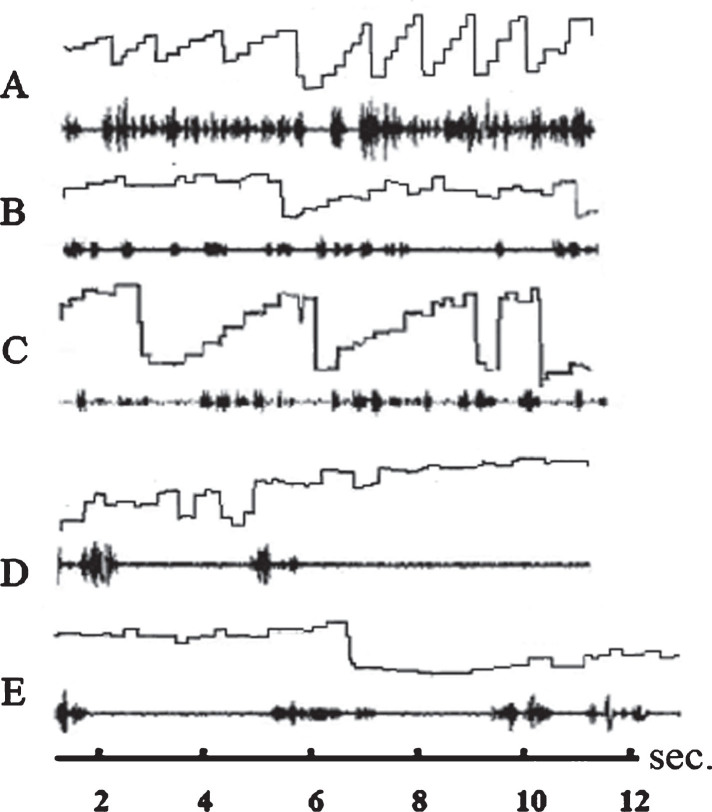Fig.2.
Eye movements and speech recording of three subjects while reading a text from the ZLT. Abscissa: time axis; ordinate: amplitude of eye movements. Ascending line: eye movement to the right; descending line: eye movement to the left. The spectrogram of the reader’s language is displayed below each graphic representation of eye movements. A: ideal staircase eye movements of a good reader (not included in the study). B: eye movements and speech spectrogram of a dyslexic reader before therapy. The subject is reading slowly with only few staircase-like eye movements and many eye movements against the reading direction (reversions). C: eye movements and speech spectrogram of the same subject after therapy. Sequences during which the subject performs staircase-like eye movements are more frequent than before therapy but there are still many reversions. D: eye movements and speech spectrogram of a dyslexic subject who is reading very slowly. The subject speaks only after having performed a series of searching eye movements. E: The subject performs more staircase-like eye movements but executes still many reversions. The speech is much more fluent. All subjects reduce reading mistakes after therapy by almost two thirds.

